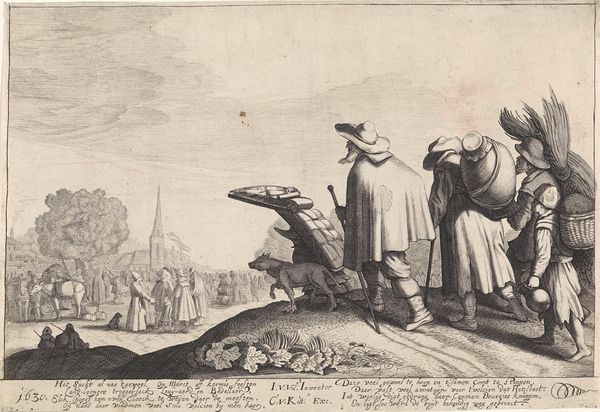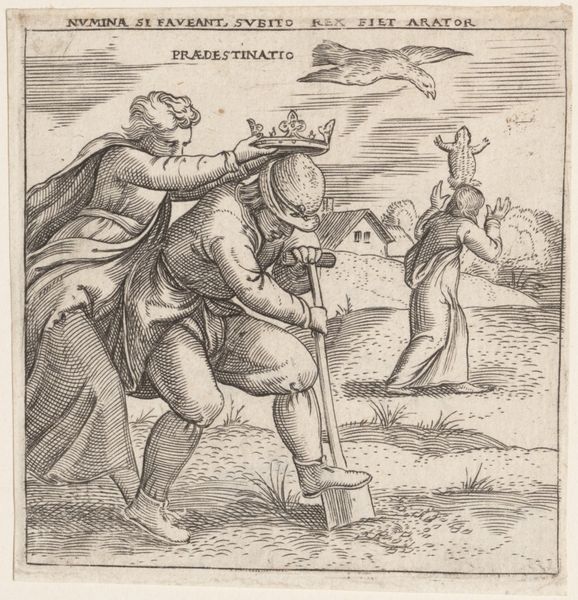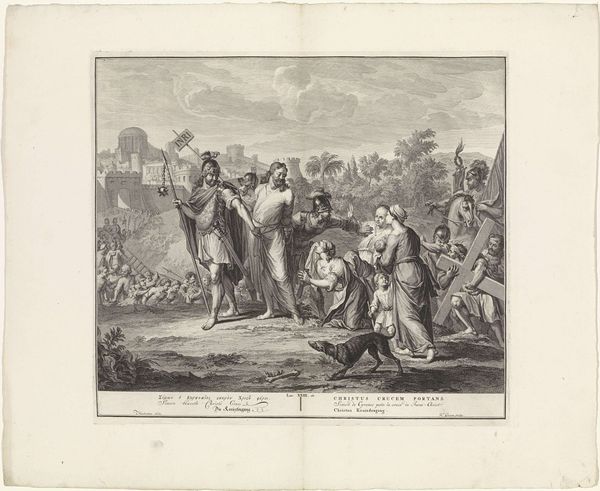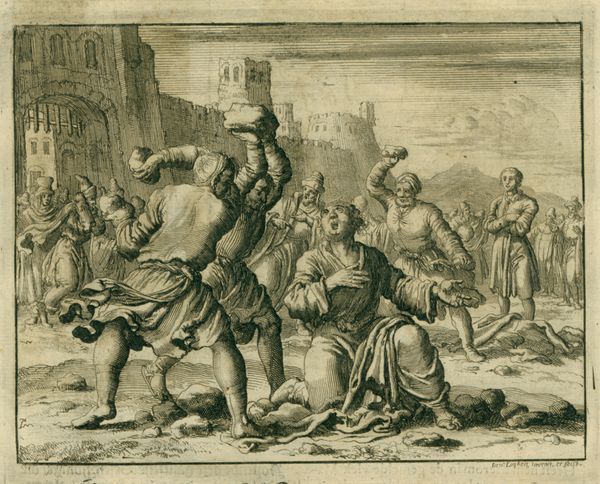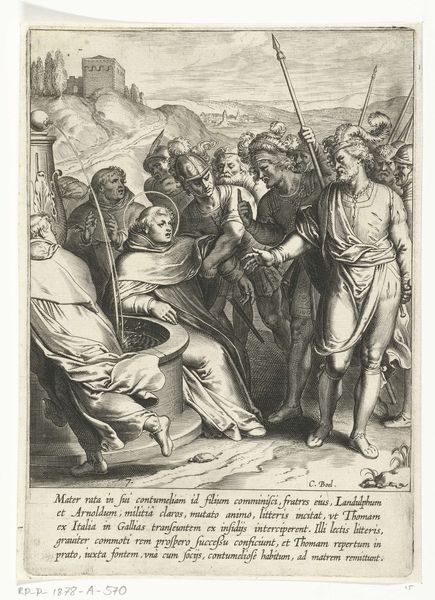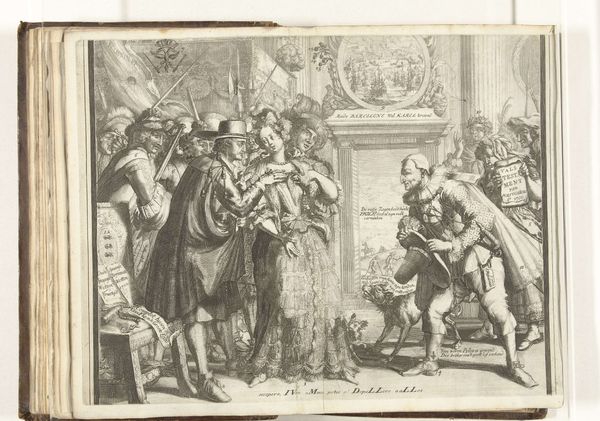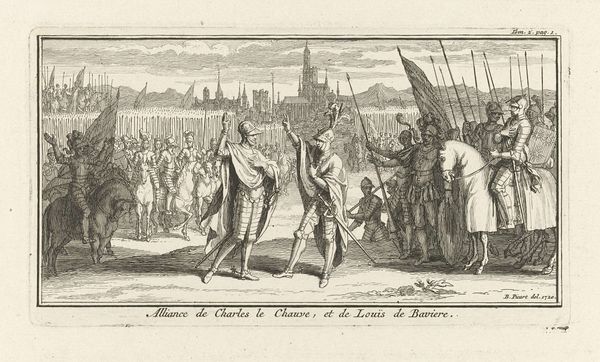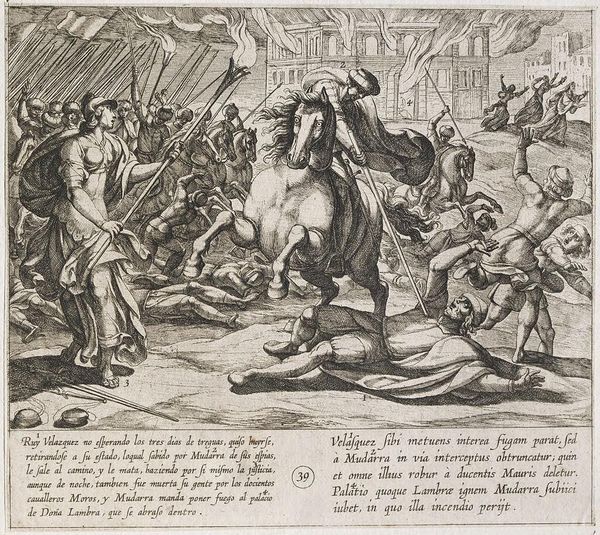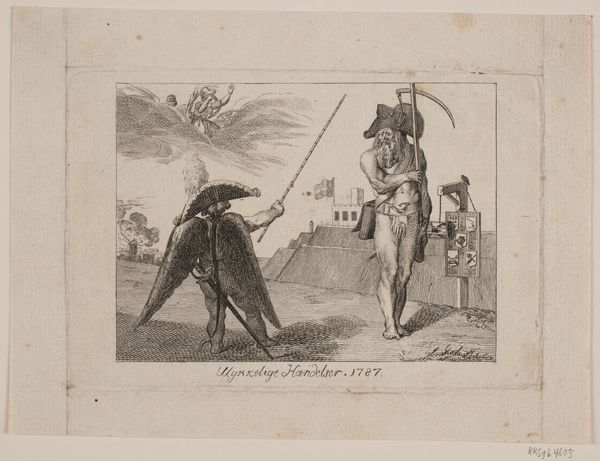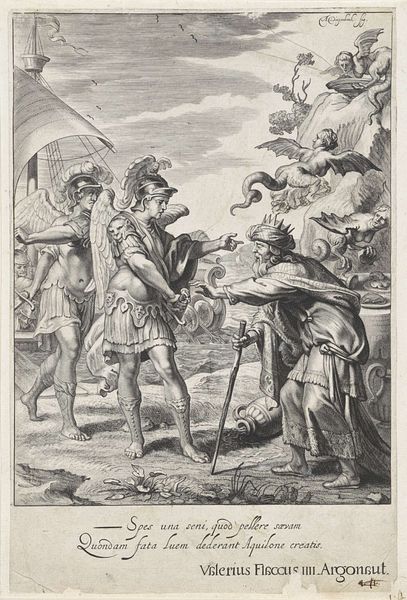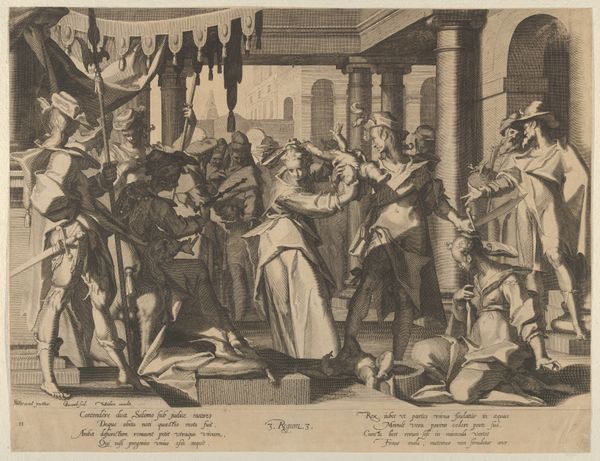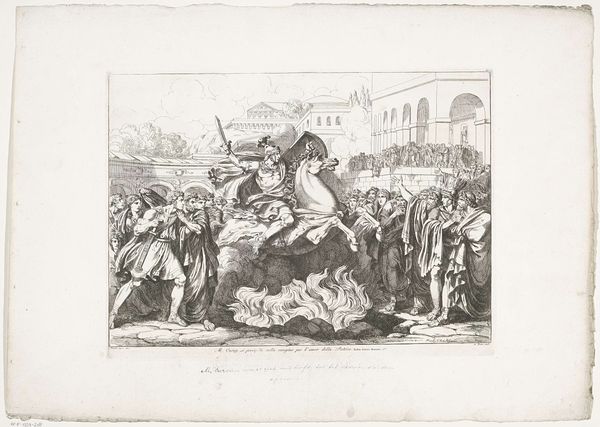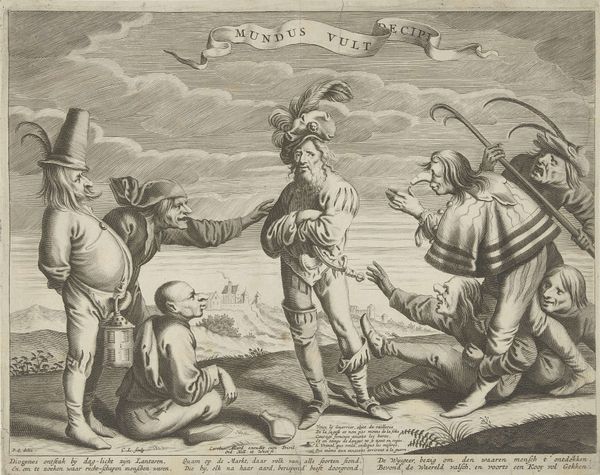
Gezegde Besiet u selven verbeeld als man met dode dieren en vrouw die bespot worden 1612 - 1665
0:00
0:00
print, engraving
#
narrative-art
#
baroque
#
dutch-golden-age
# print
#
caricature
#
caricature
#
pencil drawing
#
genre-painting
#
engraving
Dimensions: height 201 mm, width 283 mm
Copyright: Rijks Museum: Open Domain
Curator: This unsettling print, dating from somewhere between 1612 and 1665, is titled "Gezegde Besiet u selven verbeeld als man met dode dieren en vrouw die bespot worden" - which translates to "Saying Behold yourself depicted as a man with dead animals and a woman being mocked." It’s attributed to Cornelis van Dalen I and resides here at the Rijksmuseum. Editor: What strikes me immediately is the almost grotesque accumulation of textures. You’ve got fur, feathers, stiff fabrics, and even what looks like a rodent. It creates this overwhelming feeling of things clinging, accumulating…a suffocating materiality. Curator: That feeling of being overwhelmed feels right. Consider how the dead animals evoke transience, a classic *memento mori*, while the jeering figures in the background might represent the folly of worldly pursuits. The whole piece becomes a commentary on vanity. Editor: And consider the production itself. This isn’t paint; it's engraving, meticulously carved, each line representing a decision, a physical act. All those dead creatures carefully rendered, emphasizing how humans consume and process the natural world for...well, mockery it seems. Curator: The figures become potent symbols. Look at the man carrying the severed head—topped with a cat. Or the figure with the box on its head peering through spectacles. Absurdity becomes a kind of moral lesson, using the familiar imagery of Dutch Golden Age genre painting. Editor: The layering, too. Look at the different states of being represented here. The dead animals clearly altered by human intervention. Then figures, modified with props like boxes, emphasizing the degree of conscious intervention and the cost, right? Where does this material all *come* from, and who labors to create it? Curator: Indeed, the very act of transforming oneself, physically or socially, invites ridicule. The print feels deeply embedded in the anxieties about appearance and social climbing prevalent at the time. It questions our perceptions, daring us to judge what’s real versus performative. Editor: For me, it's a fascinating peek into the material anxieties of the Dutch Golden Age: this obsessive depiction of surfaces, textures, and objects speaking to larger questions about social order. Curator: And I am left thinking that the lasting power of visual symbols lets us see historical commentaries speaking to human conditions even today.
Comments
No comments
Be the first to comment and join the conversation on the ultimate creative platform.
